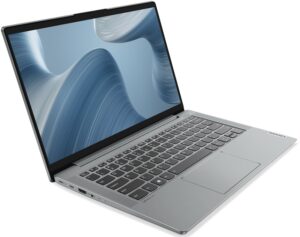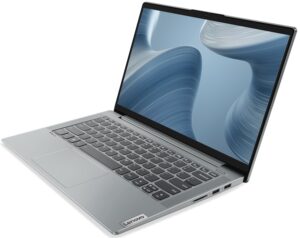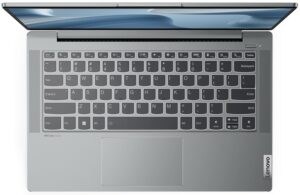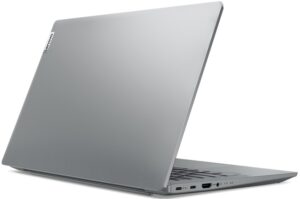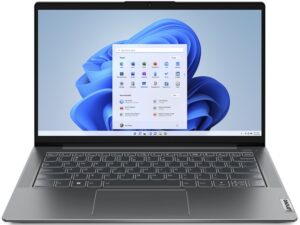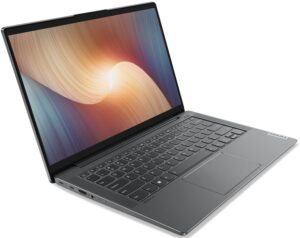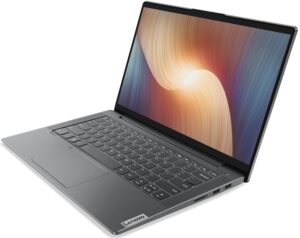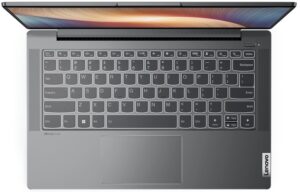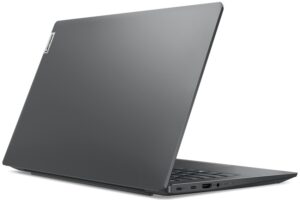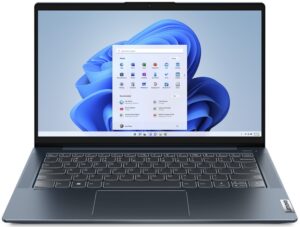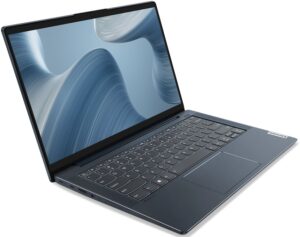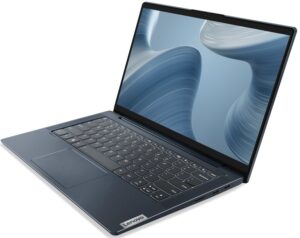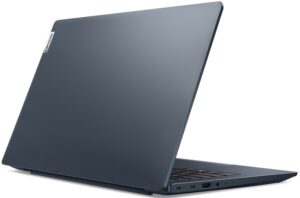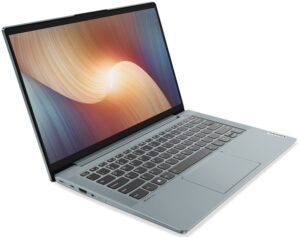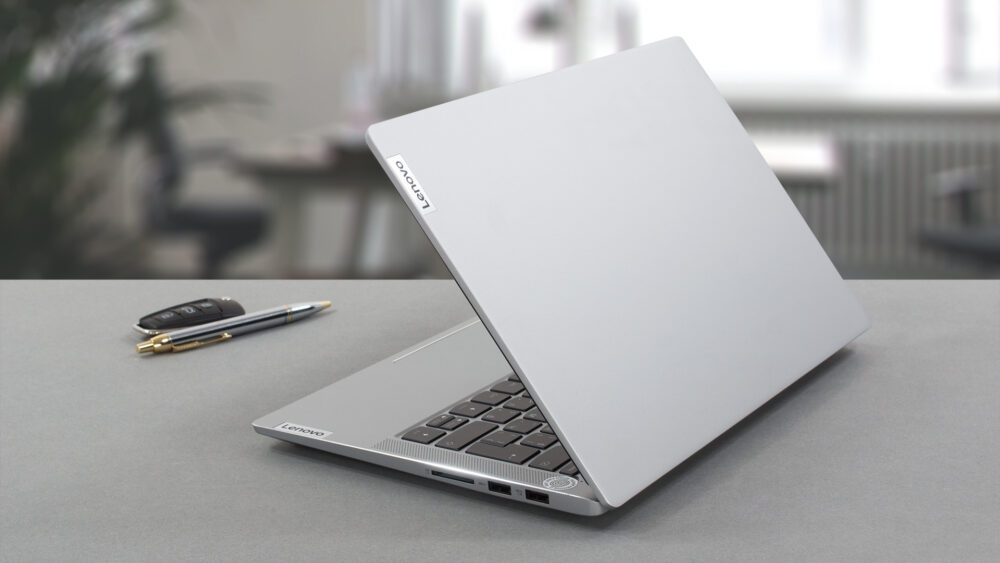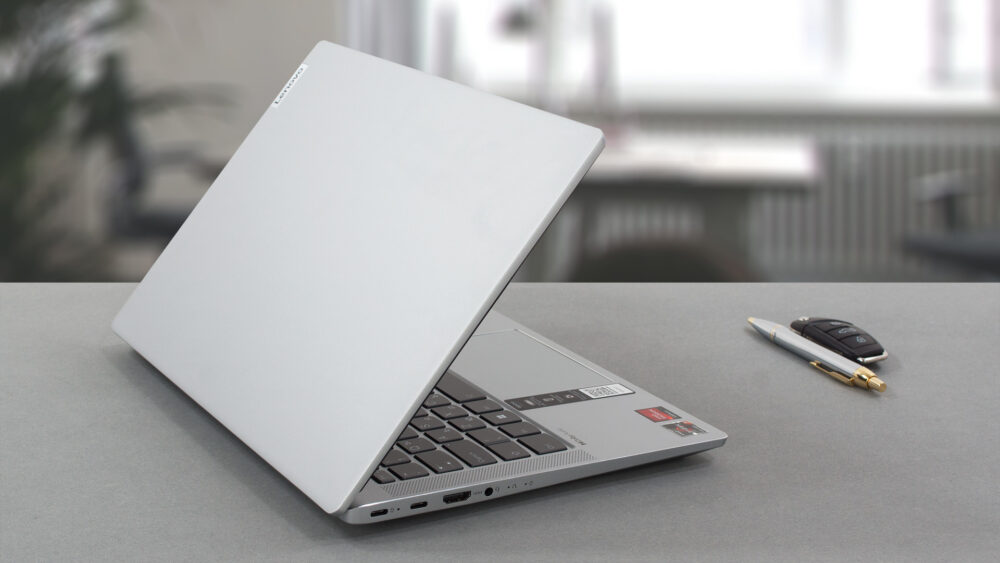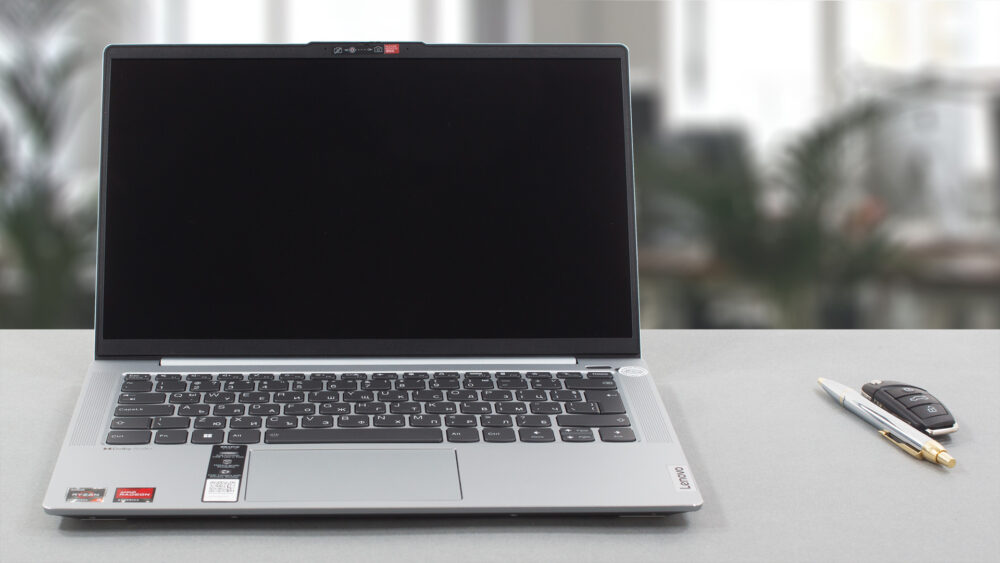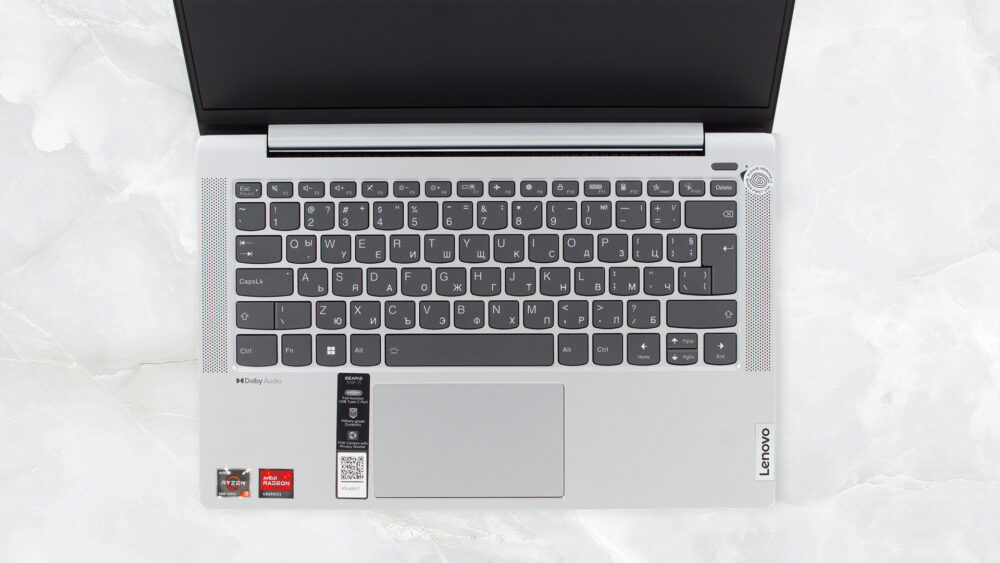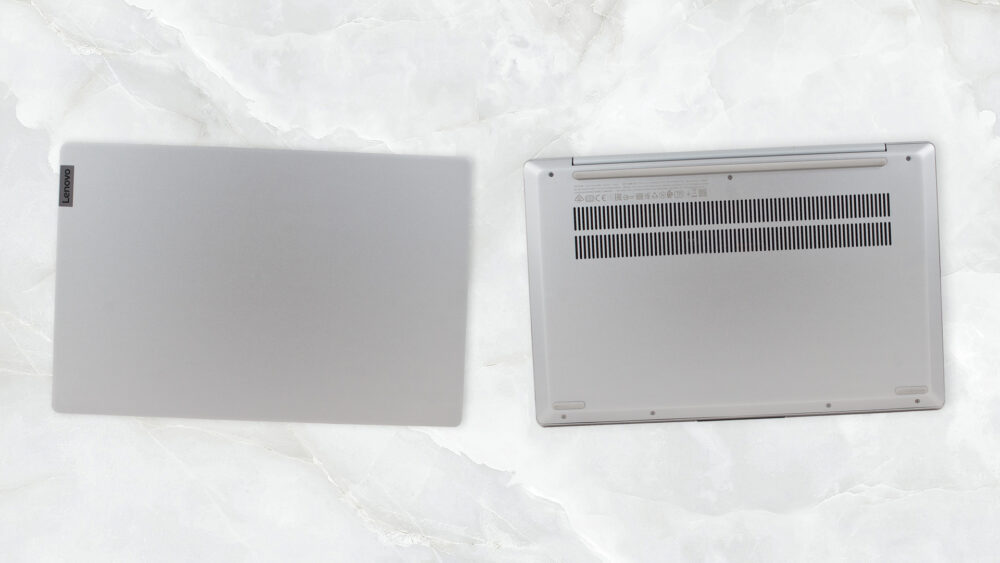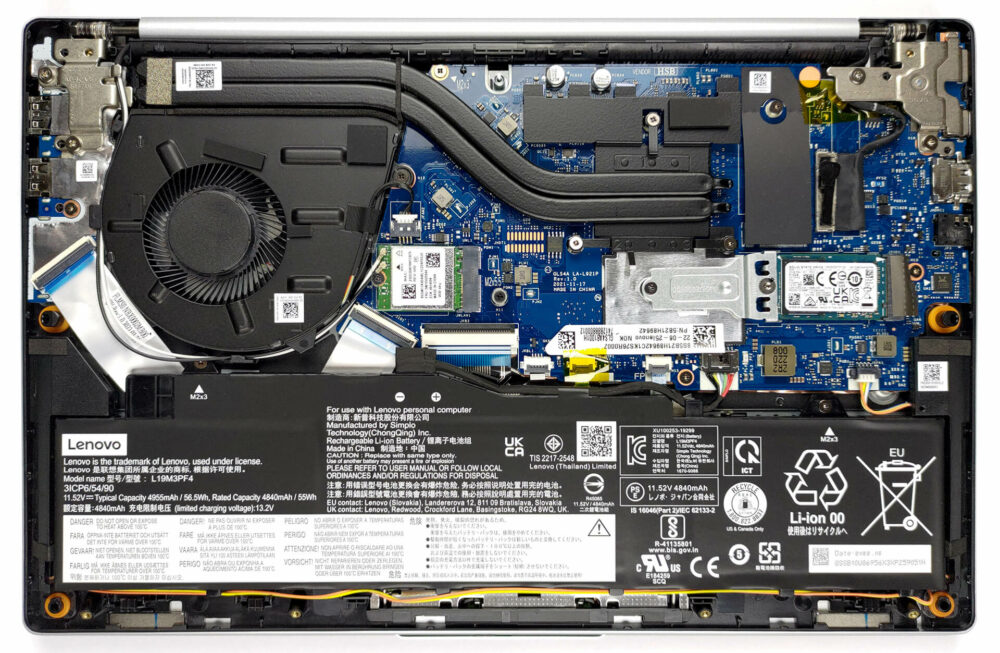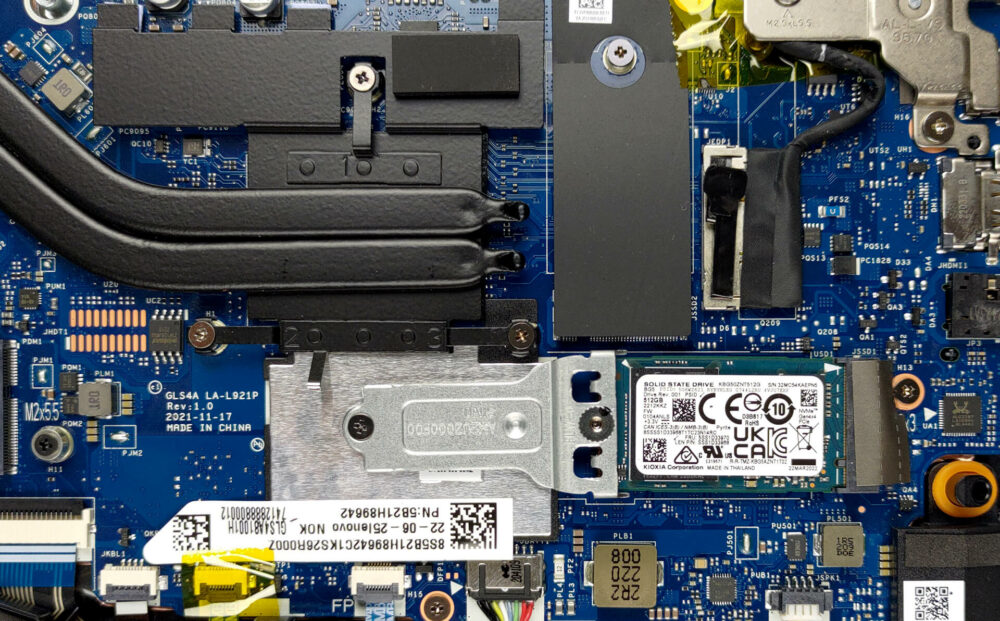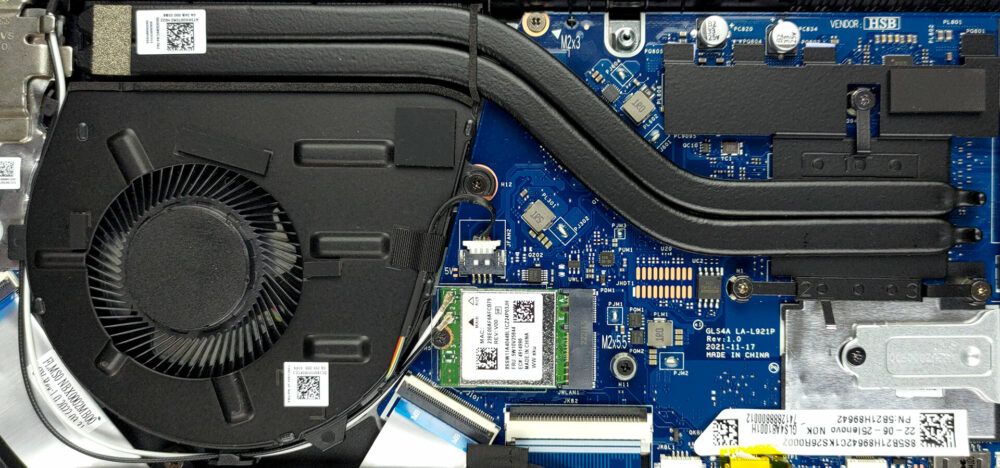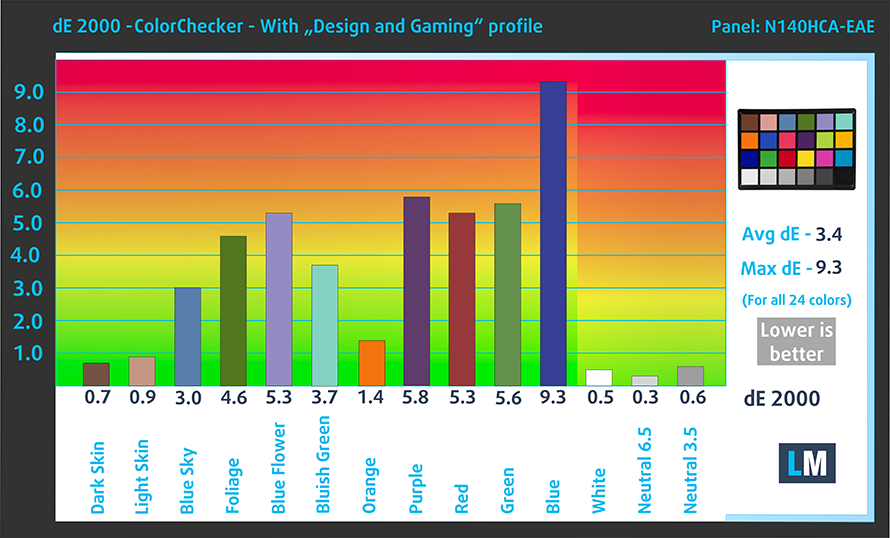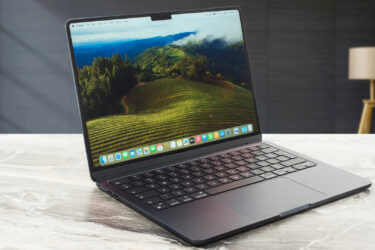Lenovo IdeaPad 5 (14″, 2022) review
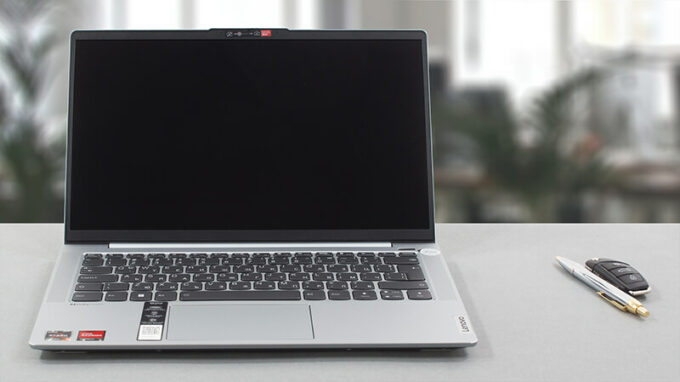 Lenovo has spent the past year thinking about how to make the IdeaPad 5 and Legion 5 more premium. And you know the maxim – if you want to make something look more expensive, just slap more metal on it.
Lenovo has spent the past year thinking about how to make the IdeaPad 5 and Legion 5 more premium. And you know the maxim – if you want to make something look more expensive, just slap more metal on it.
Like the Legion 5, the IdeaPad 5 (14″, 2022) now comes in an aluminum shell. Contrary to the situation with the gaming device, the IdeaPad still offers you the option for a plastic base.
Nevertheless, the more interesting choice you get is Intel vs AMD. However, while Team Blue is represented by the latest 12th Gen chips, AMD only supplied the refreshed Zen 3 CPUs.
Albeit it’s weird, we think that Lenovo made the right choice. The Zen 3 refresh processors are cheaper than the Ryzen 6000U ones but still offer great efficiency. You can see that later on in the battery tests we performed.
You can check the prices and configurations in our Specs System: https://laptopmedia.com/series/lenovo-ideapad-5-14-2022/
Contents
Specs Sheet
- GPU
- NVIDIA GeForce MX550 #214 in Top GPUs Intel UHD Graphics (Alder Lake, 64EU) #235 in Top GPUs Intel Iris Xe Graphics G7 (96EU) #226 in Top GPUs Intel Iris Xe Graphics G7 (80EU) #234 in Top GPUs AMD Radeon RX Vega 8 (R4000/5000, 15W) #232 in Top GPUs AMD Radeon RX Vega 7 (R4000/5000, 15W) #242 in Top GPUs AMD Radeon RX Vega 6 (R4000/5000, 15W) #251 in Top GPUsIntel Iris Xe Graphics G7 (64EU)
- HDD/SSD
- up to 1000GB SSD
- M.2 Slot
- 1x 2280 M.2 NVMe slot See photo
- RAM
- up to 16GB
- OS
- No OS, Windows 11 Home, Windows 11 Pro
- Battery
- 56.5Wh, 44.5Wh
- Body material
- Plastic / Polycarbonate, Aluminum
- Dimensions
- 321.69 x 211.84 x 16.9 - 17.9 mm (12.66" x 8.34" x 0.67")
- Weight
- 1.38 kg (3 lbs)
- Ports and connectivity
- 1x USB Type-A
- 3.2 Gen 1 (5 Gbps)
- 1x USB Type-A
- 3.2 Gen 1 (5 Gbps), Sleep and Charge
- 2x USB Type-C
- 3.2 Gen 1 (5 Gbps), Power Delivery (PD), DisplayPort
- HDMI
- 1.4b
- Card reader
- SD, SDHC, SDXC, MMC
- Ethernet LAN
- Wi-Fi
- 802.11ax
- Bluetooth
- 5.2
- Audio jack
- 3.5mm Combo Jack
- Features
- Fingerprint reader
- optional
- Web camera
- HD / FHD with Privacy Shutter, Fixed Focus
- Backlit keyboard
- optional
- Microphone
- Dual Array Microphone with Noise Cancellation, Support for Lenovo Voice Assistant/ Amazon Alexa
- Speakers
- 2x 2W Stereo Speakers, Dolby Audio
- Optical drive
- Security Lock slot
All Lenovo IdeaPad 5 (14″, 2022) configurations
What’s in the box?
As expected, the packaging offers only the random paperwork and a 65W USB Type-C charger.
Design and construction
Of course, the IdeaPad 5 (14″, 2022) is included too. The version we got was all-aluminum. Its lid is prone to some flex, while the base feels really sturdy. Not to mention … the premium feel.
Furthermore, it has a profile of 16.9mm and weighs 1.39 kg. This makes it 1mm thinner, and 10 grams heavier than the plastic configuration. By the way, when we say plastic, we mean the plastic base option. Your lid is always going to be metal regardless of the configuration of the IdeaPad 5 (14″, 2022).
Speaking of which, the lid can be opened with a single hand. Once you do this, you will find slim bezels around the matte display. The top one even houses a Web camera with a privacy shutter. Again, you have a choice between a 720p and a 1080p one.
Then, there is the base. There, we see two speaker cutouts, which surround the keyboard. The latter has decent travel and clicky feedback, making it pretty comfortable for typing.
In addition, you get a fingerprint reader, which is embedded in the power button. As for the touchpad, it has a Mylar surface with a size of 63 by 104mm. We found it pretty okay with accurate tracking and a somewhat smooth gliding experience.
Looking at the bottom panel, we see the ventilation grill. The heat exhaust is located between the base and the lid.
Ports
On the left side, there are two USB Type-C 3.2 (Gen. 1) ports with Power Delivery and DisplayPort support. Then, there is an HDMI 1.4b connector, and an Audio jack. Switch sides, and you’ll find two USB Type-A 3.2 (Gen. 1) ports, and an SD card reader.
Disassembly, upgrade options, and maintenance
To access this notebook’s internals, you need to undo 7 Torx-head screws. Then, pry the bottom panel starting from the back.
Inside, we find a 56.5Wh battery pack. It lasts for 12 hours and 30 minutes of Web browsing, or nearly 11 hours of video playback. To take it out, you need to unplug the connector from the motherboard. Then, undo the two Phillips-head screws, holding it in place, and untangle the speaker cable from the bottom part of the battery.
Here, the memory is soldered to the motherboard. You can get a maximum of 16GB of DDR4 RAM, working at 3200MHz. Storage-wise, there is one M.2 PCIe x4 slot. Weirdly, there is something that looks like a second slot, but no official information says that it uses two M.2 ports for storage.
The cooling comprises two heat pipes, a fan, and some metal heat spreaders for the VRMs.
Display quality
Lenovo IdeaPad 5 (14″, 2022) has a touchscreen Full HD IPS display, model number Innolux N140HCA-EAE (CMN140A). Its diagonal is 14″ (35.56 cm), and the resolution – 1920 х 1080. Additionally, the screen ratio is 16:9, the pixel density – 157 ppi, and their pitch – 0.161 x 0.161 mm. The screen can be considered Retina when viewed from at least 56 cm (from this distance, the average human eye can’t see the individual pixels).
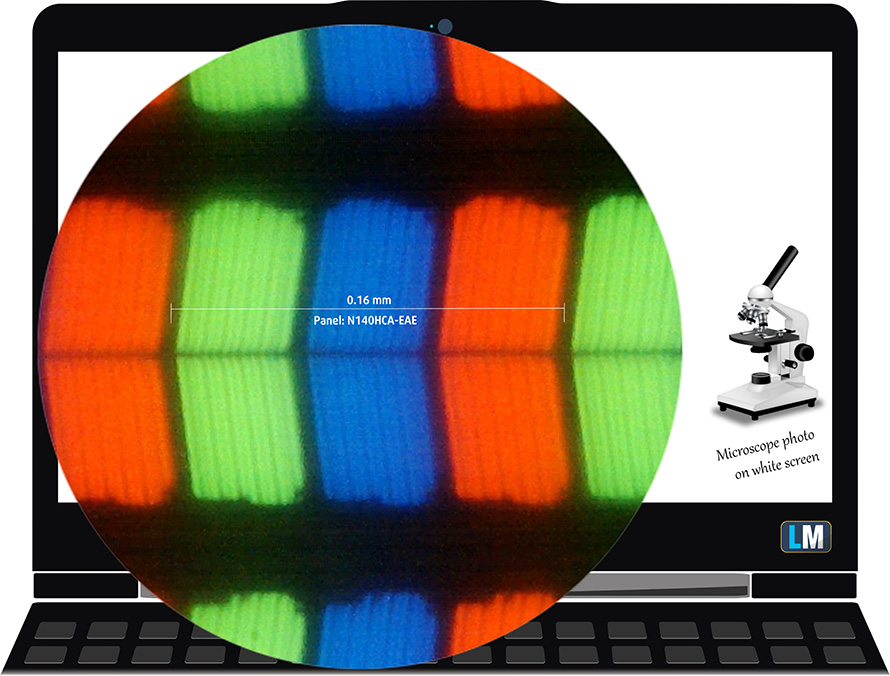
Its viewing angles are excellent. We have provided images at 45 degrees to evaluate quality.
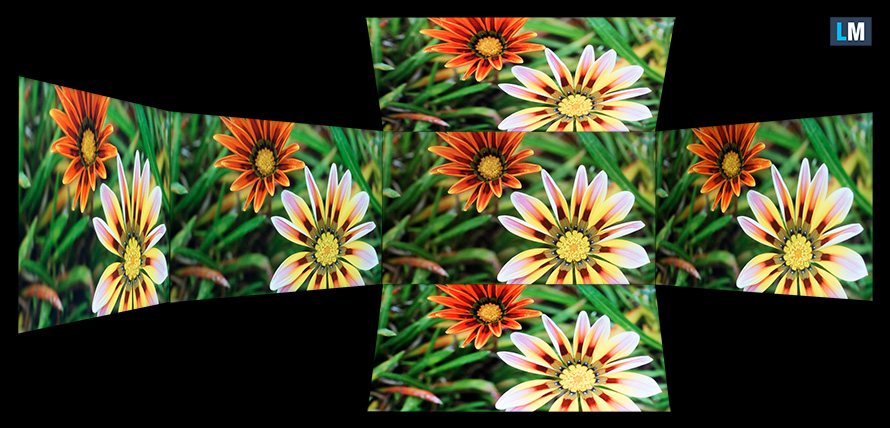
Also, a video with locked focus and exposure.
The maximum measured brightness is 296 nits (cd/m2) in the middle of the screen and 279 nits (cd/m2) average across the surface with a maximum deviation of 10%. The Correlated Color Temperature on a white screen and at maximum brightness is 6430K.
In the illustration below you can see how the display performs from a uniformity perspective. The illustration below shows how matters are for operational brightness levels (approximately 140 nits) – in this particular case at 83% Brightness (White level = 144 cd/m2, Black level = 0.12 cd/m2).
Values of dE2000 over 4.0 should not occur, and this parameter is one of the first you should check if you intend to use the laptop for color-sensitive work (a maximum tolerance of 2.0 ). The contrast ratio is good – 1230:1.
To make sure we are on the same page, we would like to give you a little introduction to the sRGB color gamut and the Adobe RGB. To start, there’s the CIE 1976 Uniform Chromaticity Diagram that represents the visible specter of colors by the human eye, giving you a better perception of the color gamut coverage and the color accuracy.
Inside the black triangle, you will see the standard color gamut (sRGB) that is being used by millions of people on HDTV and on the web. As for the Adobe RGB, this is used in professional cameras, monitors, etc for printing. Colors inside the black triangle are used by everyone and this is an essential part of the color quality and color accuracy of a mainstream notebook.
Still, we’ve included other color spaces like the famous DCI-P3 standard used by movie studios, as well as the digital UHD Rec.2020 standard. Rec.2020, however, is still a thing of the future and it’s difficult for today’s displays to cover that well. We’ve also included the so-called Michael Pointer gamut, or Pointer’s gamut, which represents the colors that naturally occur around us every day.
The yellow dotted line shows Lenovo IdeaPad 5 (14″, 2022)’s color gamut coverage.
Its display covers just 54% of the sRGB/ITU-R BT.709 (web/HDTV standard) in CIE1976.

Our “Design and Gaming” profile delivers optimal color temperature (6500K) at 140 cd/m2 luminance and sRGB gamma mode.
We tested the accuracy of the display with 24 commonly used colors like light and dark human skin, blue sky, green grass, orange, etc. You can check out the results at factory condition and also, with the “Design and Gaming” profile.
Below you can compare the scores of Lenovo IdeaPad 5 (14″, 2022) with the default settings (left), and with the “Gaming and Web design” profile (right).
The next figure shows how well the display can reproduce dark parts of an image, which is essential when watching movies or playing games in low ambient light.
The left side of the image represents the display with stock settings, while the right one is with the “Gaming and Web Design” profile activated. On the horizontal axis, you will find the grayscale, and on the vertical axis – the luminance of the display. On the two graphs below you can easily check for yourself how your display handles the darkest nuances but keep in mind that this also depends on the settings of your current display, the calibration, the viewing angle, and the surrounding light conditions.
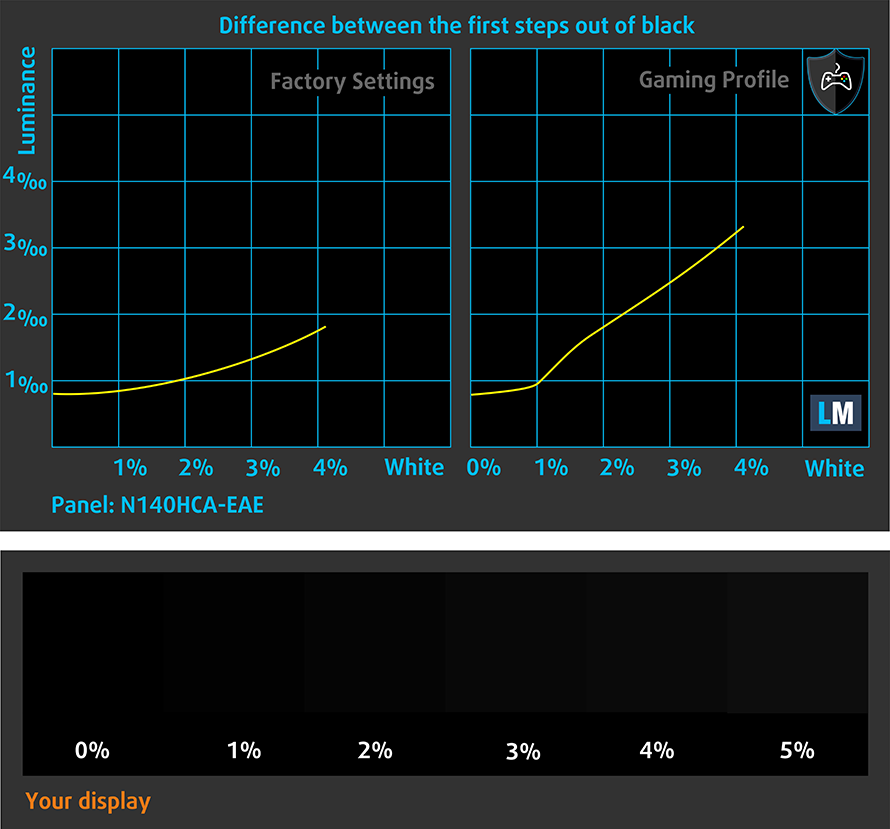
Response time (Gaming capabilities)
We test the reaction time of the pixels with the usual “black-to-white” and “white-to-black” method from 10% to 90% and vice versa.
We recorded Fall Time + Rise Time = 24 ms
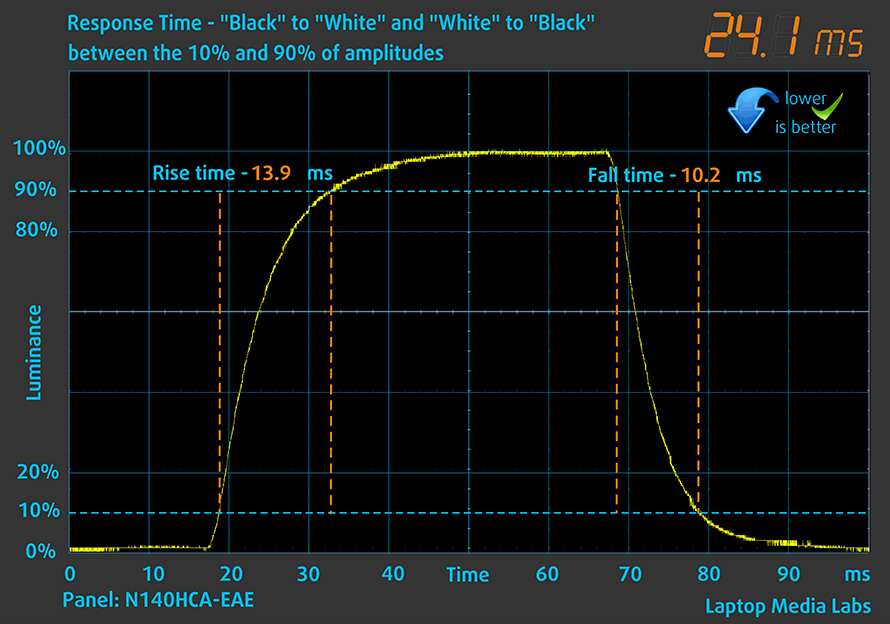
After that, we test the reaction time of the pixels with the usual “Gray-to-Gray” method from 50% White to 80% White and vice versa between 10% and 90% of the amplitude.

Health impact – PWM / Blue Light
PWM (Screen flickering)
Pulse-width modulation (PWM) is an easy way to control monitor brightness. When you lower the brightness, the light intensity of the backlight is not lowered, but instead turned off and on by the electronics with a frequency indistinguishable to the human eye. In these light impulses, the light/no-light time ratio varies, while brightness remains unchanged, which is harmful to your eyes. You can read more about that in our dedicated article on PWM.
Lenovo IdeaPad 5 (14″, 2022)’s backlight doesn’t use PWM for brightness adjustment. This makes the display comfortable for long hours of work and safe for your eyes in this aspect.

Blue light emissions
Installing our Health-Guard profile not only eliminates PWM but also reduces the harmful Blue Light emissions while keeping the colors of the screen perceptually accurate. If you’re not familiar with the Blue light, the TL;DR version is – emissions that negatively affect your eyes, skin, and your whole body. You can find more information about that in our dedicated article on Blue Light.
Gloss level measurement
Glossy-coated displays are sometimes inconvenient in high ambient light conditions. We show the level of reflection on the screen for the respective laptop when the display is turned off and the measurement angle is 60° (in this case, the result is 52.8 GU).
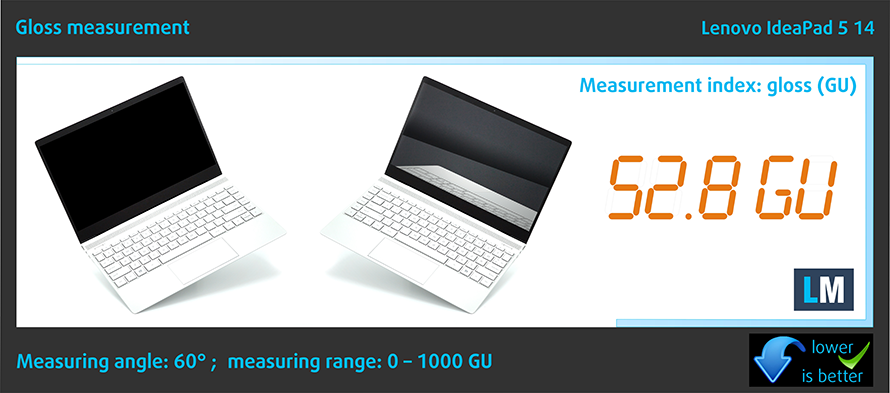
Buy our profiles
Since our profiles are tailored for each display model, this article and its respective profile package are meant for Lenovo IdeaPad 5 (14″, 2022) configurations with 14.0″ Innolux N140HCA-EAE (CMN140A) (FHD, 1920 × 1080) IPS panel.
*Should you have problems with downloading the purchased file, try using a different browser to open the link you’ll receive via e-mail. If the download target is a .php file instead of an archive, change the file extension to .zip or contact us at [email protected].
Read more about the profiles HERE.
In addition to receiving efficient and health-friendly profiles, by buying LaptopMedia's products you also support the development of our labs, where we test devices in order to produce the most objective reviews possible.

Office Work
Office Work should be used mostly by users who spend most of the time looking at pieces of text, tables or just surfing. This profile aims to deliver better distinctness and clarity by keeping a flat gamma curve (2.20), native color temperature and perceptually accurate colors.

Design and Gaming
This profile is aimed at designers who work with colors professionally, and for games and movies as well. Design and Gaming takes display panels to their limits, making them as accurate as possible in the sRGB IEC61966-2-1 standard for Web and HDTV, at white point D65.

Health-Guard
Health-Guard eliminates the harmful Pulse-Width Modulation (PWM) and reduces the negative Blue Light which affects our eyes and body. Since it’s custom tailored for every panel, it manages to keep the colors perceptually accurate. Health-Guard simulates paper so the pressure on the eyes is greatly reduced.
Get all 3 profiles with 33% discount
Sound
Lenovo IdeaPad 5 (14″, 2022)’s Dolby Audio speakers produce a sound of decent quality. Its low, mid, and high tones are clear of deviations.
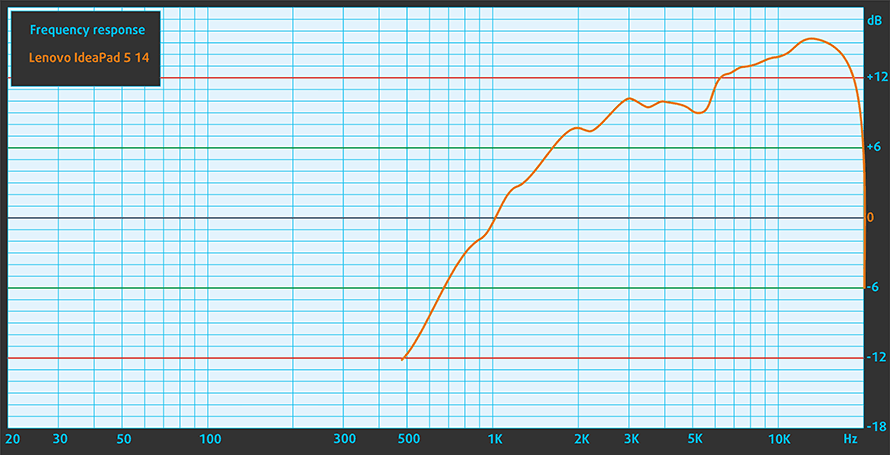
Drivers
All drivers and utilities for this notebook can be found here: https://pcsupport.lenovo.com/us/en/products/laptops-and-netbooks/5-series/ideapad-5-14aba7/downloads/driver-list
Battery
Now, we conduct the battery tests with the Windows Better performance setting turned on, screen brightness adjusted to 120 nits, and all other programs turned off except for the one we are testing the notebook with. This device’s 56.5Wh battery pack lasts for 12 hours and 23 minutes of Web browsing, or 10 hours and 40 minutes of video playback.
In order to simulate real-life conditions, we used our own script for automatic web browsing through over 70 websites.
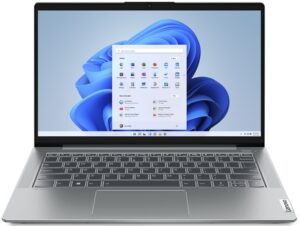

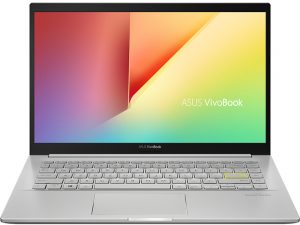

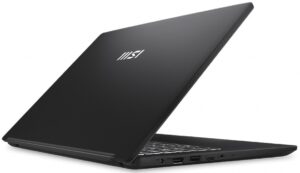
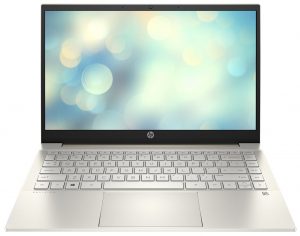
For every test like this, we use the same video in HD.






CPU options
You can find this machine with the Ryzen 3 5425U, Ryzen 5 5625U, or Ryzen 7 5825U. They are respectively 4, 6, and 8-core CPUs with multithreading support.
Results are from the Cinebench R23 CPU test (the higher the score, the better)
Results are from our Photoshop benchmark test (the lower the score, the better)
GPU options
There are no dedicated graphics options for the AMD version of the device. This “leaves” you with the integrated Radeon RX Vega graphics.
Results are from the 3DMark: Time Spy (Graphics) benchmark (higher the score, the better)
Results are from the 3DMark: Fire Strike (Graphics) benchmark (higher the score, the better)
Results are from the 3DMark: Wild Life benchmark (higher the score, the better)
Results are from the Unigine Superposition benchmark (higher the score, the better)
Gaming tests
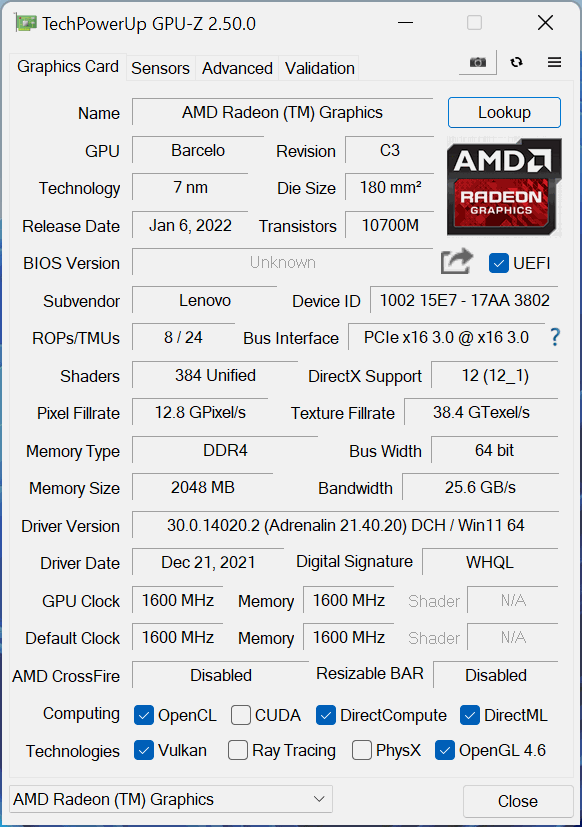

| CS:GO | HD 1080p, Low (Check settings) | HD 1080p, Medium (Check settings) | HD 1080p, MAX (Check settings) |
|---|---|---|---|
| Average FPS | 48 fps | 33 fps | 22 fps |

| DOTA 2 | HD 1080p, Low (Check settings) | HD 1080p, Normal (Check settings) | HD 1080p, High (Check settings) |
|---|---|---|---|
| Average FPS | 68 fps | 36 fps | 21 fps |
Temperatures and comfort
Max CPU load
In this test we use 100% on the CPU cores, monitoring their frequencies and chip temperature. The first column shows a computer’s reaction to a short load (2-10 seconds), the second column simulates a serious task (between 15 and 30 seconds), and the third column is a good indicator of how good the laptop is for long loads such as video rendering.
Average core frequency (base frequency + X); CPU temp.
| AMD Ryzen 3 5425U (15W TDP) | 0:02 – 0:10 sec | 0:15 – 0:30 sec | 10:00 – 15:00 min |
|---|---|---|---|
| Lenovo IdeaPad 5 (14″, 2022) | 3.57 GHz @ 69°C @ 35W | 3.52 GHz @ 80°C @ 34W | 3.19 GHz @ 73°C @ 24W |
With clock speeds comfortably over 3.00 GHz, and temperatures just over 70°C at the end of the test, this happens to be quite a solid performer.
Comfort during full load
Additionally, it is pretty quiet under extreme workload, while the hotspot in the keyboard is on the other side of the processor, which is pretty close to the middle of the keyboard. However, the heat is not too much.
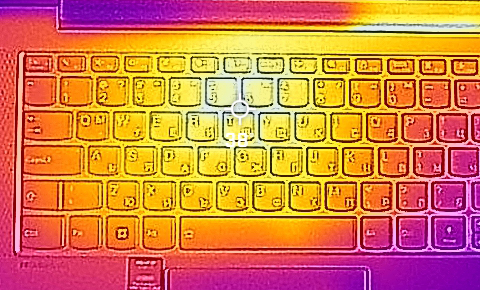
Verdict
 What can you hate about the IdeaPad 5 (14″, 2022)? It shows a fantastic performance, even with the lowest-tier processor it comes with. The battery life is also fantastic, while the 65W USB Type-C charger can revive 2 hours’ worth of use in only 15 minutes.
What can you hate about the IdeaPad 5 (14″, 2022)? It shows a fantastic performance, even with the lowest-tier processor it comes with. The battery life is also fantastic, while the 65W USB Type-C charger can revive 2 hours’ worth of use in only 15 minutes.
Speaking of battery, we faced more than 12 hours of Web browsing or nearly 11 hours of video playback on a single charge.
Lenovo IdeaPad 5 (14″, 2022)’s IPS panel has a Full HD resolution, comfortable viewing angles, and a good contrast ratio. Its backlight doesn’t use PWM for brightness adjustment, but unfortunately, it covers only 54% of the sRGB color gamut.
This means the colors are not very vibrant. On the other hand, Lenovo sells this notebook with another 1080p IPS unit, which has an alleged full sRGB coverage.
The port selection on the outside is pretty fine with two regular-size USB ports, as well as two USB Type-Cs that offer DisplayPort and Power Delivery. And the cream of the crop for many people – an SD card reader.
We are super happy with the premium-looking sleek design. Its structure is really tough, but unfortunately, the memory inside is soldered to the motherboard. In fact, this is the biggest letdown in our opinion.
Our advice is to go directly for the 16GB option and get the Ryzen 5 5625U, instead of the Ryzen 7, combined with 8GB of RAM for roughly the same money.
You can check the prices and configurations in our Specs System: https://laptopmedia.com/series/lenovo-ideapad-5-14-2022/
Pros
- USB Type-C charging, SD card, and M.2 PCIe x4 drive support
- Reasonably comfortable keyboard with optional backlight
- No PWM (Innolux N140HCA-EAE (CMN140A))
- Comfortable viewing angles and good contrast ratio (Innolux N140HCA-EAE (CMN140A))
- Decent performance and good cooling
- Pretty long battery life
- Optional all-metal design
Cons
- Covers only 54% of sRGB (Innolux N140HCA-EAE (CMN140A))
- Memory is soldered to the motherboard


